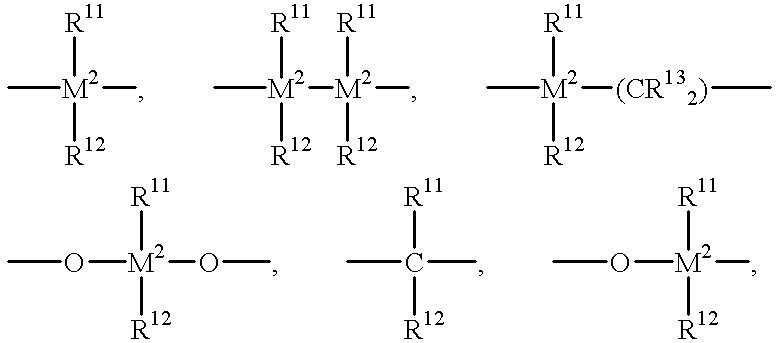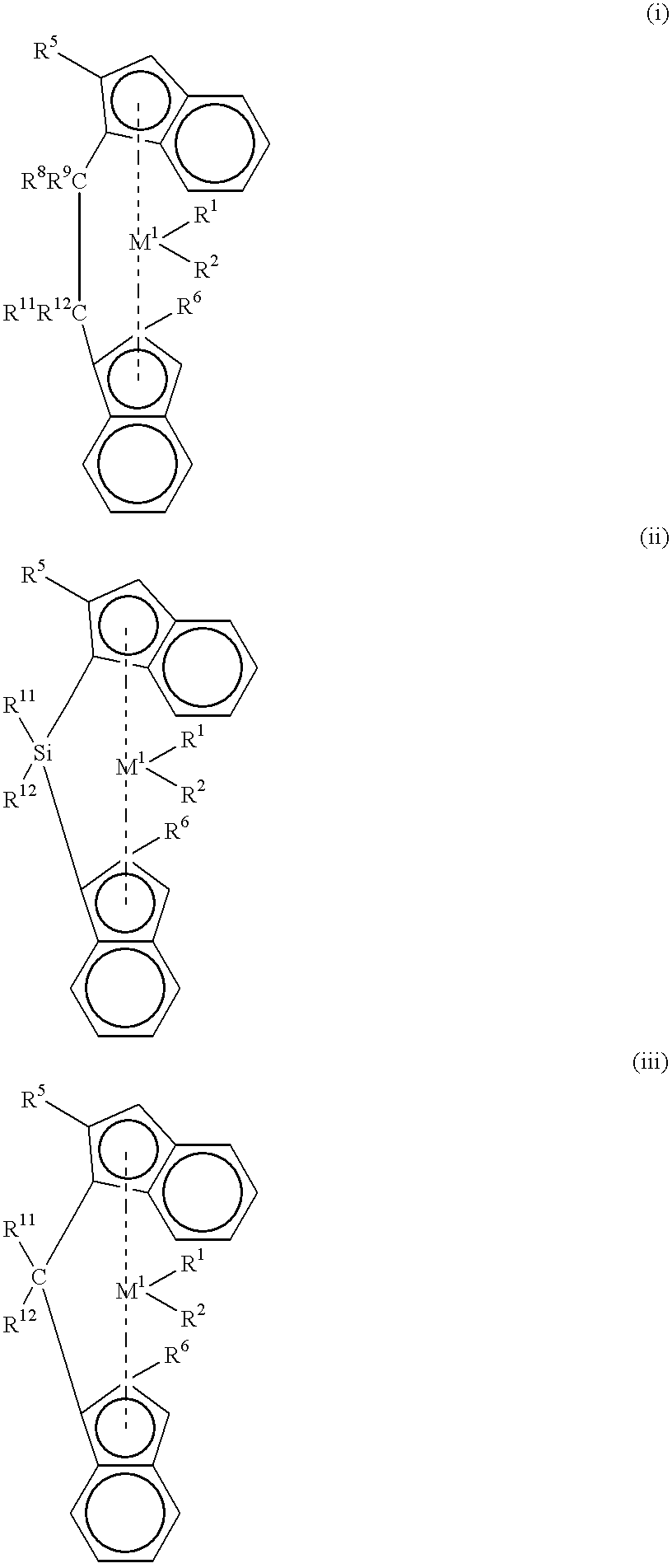Olefin copolymer shrink film
a copolymer and copolymer technology, applied in the field of shrink film, can solve the problems of low transparency and gloss of all the films prepared from these materials, low temperature shrinkability, and low quality of the film, and achieve the effect of excellent transparency and low temperature shrinkability
- Summary
- Abstract
- Description
- Claims
- Application Information
AI Technical Summary
Benefits of technology
Problems solved by technology
Method used
Image
Examples
production example 1
Production of Ethylene / styrene Random Copolymer
A 1 lit. glass reactor equipped with a condenser and an agitator was satisfactorily purged with nitrogen, charged with 487 ml of toluene and 13 ml of styrene and filled with ethylene under agitation. Subsequently, the system interior was heated to 35.degree. C., and 4.5 mM of methylaluminoxane (produced by Tosoh Akzo, 10% by weight toluene solution) and 0.045 mM of (t-butylamido)dimethyl(tetramethyl-.eta..sup.5 -cyclopentadienyl)silane titanium dichloride (0.01 mM toluene solution) were added to the mixture. A polymerization was conducted at 40.degree. C. for 60 min while continuously feeding ethylene at a rate of 100 Nlit. / hr.
After the completion of the polymerization, 250 ml of isobutyl alcohol and 10 ml of aqueous hydrochloric acid were added to the mixture and heated at 80.degree. C. for 30 min under agitation. The obtained reaction mixture containing isobutyl alcohol was transferred to a separating funnel, washed with 250 ml of wat...
production example 2
Production of Ethylene / 1-octene / styrene Random Copolymer
A 2 lit. autoclave was satisfactorily purged with nitrogen and charged with 430 ml of toluene, 163 ml of styrene and 7 ml of 1-octene. Subsequently, ethylene was introduced to to be a pressure of 16 kg / cm.sup.2 while heating the system interior to 90.degree. C. under agitation. Thereafter, 5.0 mM of methylaluminoxane (produced by Tosoh Akzo, 3% by weight toluene solution) and 0.005 mM of (t-butylamido)dimethyl(tetramethyl-.eta..sup.5 -cyclopentadienyl)silane titanium dichloride synthesized by the conventional process were placed in a separate reactor and agitated for 20 min. The mixture was introduced into the autoclave, and a polymerization was initiated. The polymerization was performed for 30 min while continuously feeding ethylene so that the ethylene pressure was maintained at 16 kg / cm.sup.2 during the polymerization. The polymerization was terminated by adding 5 ml of methanol.
After the completion of the polymerization, a...
production example 3
Production of Ethylene / 1-octene / styrene Random Copolymer
A 2 lit. autoclave was satisfactorily purged with nitrogen and charged with 400 ml of toluene, 170 ml of styrene and 30 ml of 1-octene. Subsequently, ethylene was introduced to to be a pressure of 16 kg / cm.sup.2 while heating the system interior to 90.degree. C. under agitation. Thereafter, 5.0 mM of methylaluminoxane (produced by Tosoh Akzo, 3% by weight toluene solution) and 0.005 mM of (t-butylamido)dimethyl(tetramethyl-.eta..sup.5 -cyclopentadienyl)silane titanium dichloride synthesized by the conventional process were placed in a separate reactor and agitated for 20 min. The mixture was introduced into the autoclave, and a polymerization was initiated. The polymerization was performed for 30 min while continuously feeding ethylene so that the ethylene pressure was maintained at 16 kg / cm.sup.2 during the polymerization. The polymerization was terminated by adding 5 ml of methanol.
After the completion of the polymerization, ...
PUM
| Property | Measurement | Unit |
|---|---|---|
| melting point | aaaaa | aaaaa |
| melting point | aaaaa | aaaaa |
| thermal shrinkage factor | aaaaa | aaaaa |
Abstract
Description
Claims
Application Information
 Login to View More
Login to View More - R&D
- Intellectual Property
- Life Sciences
- Materials
- Tech Scout
- Unparalleled Data Quality
- Higher Quality Content
- 60% Fewer Hallucinations
Browse by: Latest US Patents, China's latest patents, Technical Efficacy Thesaurus, Application Domain, Technology Topic, Popular Technical Reports.
© 2025 PatSnap. All rights reserved.Legal|Privacy policy|Modern Slavery Act Transparency Statement|Sitemap|About US| Contact US: help@patsnap.com



